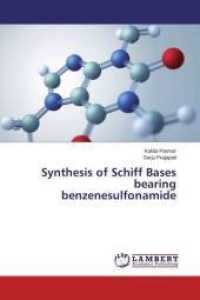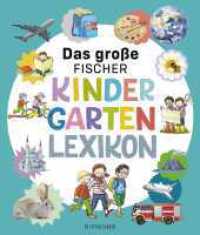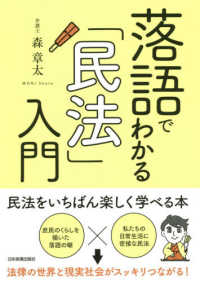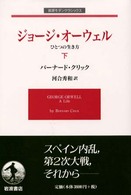Full Description
The teaching and learning of mathematics in Saskatchewan—one of three Canadian provinces sharing a border with Montana—has a long and storied history. An integral part of the past 50 years (1961-2011) of history has been vinculum: Journal of the Saskatchewan Mathematics Teachers' Society (in its many different renditions). This monograph, which presents ten memorable articles from each of the past five decades (i.e., 50 articles from the past 50 years of the journal), provides an opportunity to share this rich history with a wide range of individuals interested in the teaching and learning of mathematics and mathematics education. Each decade begins with an introduction, providing a historical context, and concludes with a decade-specific commentary by a prominent member of the Saskatchewan mathematics education community. As a result, this monograph provides a historical account as well as a contemporary view of many of the trends and issues (e.g., curriculum, technology) in the teaching and learning of mathematics. This book is meant to serve as a resource for a variety of individuals, including teachers of mathematics, mathematics teacher educators, mathematics education researchers, historians, and undergraduate and graduate students and, further, as a celebratory retrospective on the work of the Saskatchewan Mathematics Teachers' Society.
Contents
Acknowledgements.
SMTS Roles and Objectives.
Preface; Egan J. Chernoff.
THE 1960s.
Introduction: The Sixties: The Times They Are A-Changin'; Gale Russell and Egan Chernoff.
Chapter 1. The Character of the Crisis; J. M. Cherney.
Chapter 2. Mathematics at Teachers College—Much Done and More to Do: A Survey of the One Year Training Program; G. J. Thiessen.
Chapter 3. Inadequacies of Teachers of Arithmetic: We May Never Catch Up With the Knowledge Explosion, But We Should Try; Rod A. Wickstrom.
Notice of Affiliation: National Council of Teachers of Mathematics (NCTM).
Chapter 4. Electric Computers in High School; C. L. Kaller.
Chapter 5. The Mathematics Classroom; Wayne Kerr, Stewart Penley and F. A. Cousins.
Chapter 6. Implementation of New Mathematics: Curricula in Secondary Schools; Howard F. Fehr.
Chapter 7. The Role of the Canadian Teacher of Mathematics; Douglas H. Crawford.
Chapter 8. Canadian Association of Mathematics Teachers; A. J. Dawson.
Chapter 9. Mathematics Across Canada; A. J. Dawson.
Chapter 10. The Buddy System in Learning Mathematics; K. W. Kenney.
Chapter 11. Mathematics for the Exceptional Child; Zoltan P. Dienes.
Commentary: The 1960s; Ilona Vashchyshyn and Egan Chernoff.
THE 1970s.
Introduction: The Seventies; Egan Chernoff.
Chapter 13. Mathematical Heuristics; A. J. Sandy Dawson.
Chapter 14. What Geometry in the Elementary School? James E. Beamer.
Chapter 15. Why are We Teaching High School Geometry? David Robitaille.
Chapter 16. A Case for Individual Progress in Mathematics; Donald C. Attridge.
Chapter 17. Why Not Require an 80% Performance in Mathematics? Donald C. Attridge.
Chapter 18. Survey and Educational Implications of S.I.; Sharon E. Odegard.
Chapter 19. A Continuing Success: Computer-Assisted Instruction; E. W. Romaniuk.
Chapter 20. New Wine in Old Bottles; G. J. Thiessen.
Chapter 21. Is Mathematics Ripe for Mastery Learning? L. R. S. Richmond.
Chapter 22. The 'New Math' in Schools: Should We Extend It, Amend It, or Abolish It? W. W. Sawyer.
Chapter 23. The Status of Saskatchewan Secondary School Mathematics Teachers With Implications for the Teacher Education Programs in Saskatchewan; D. V. Kapoor.
Commentary: The 1970s; Ilona Vashchyshyn and Egan Chernoff.
THE 1980s.
Introduction: The Eighties; Egan Chernoff.
Chapter 24. High School Mathematics Review Test at the University of Saskatchewan; Garth H. M. Thomas.
Chapter 25. Rx for the 80s: Microcomputers and Problem Solving; Gary G. Bitter.
Chapter 26. Computer Science and Mathematics: How Can—or Should—The Twain Meet? Anthony Ralston.
Chapter 27. Mathematics: Basics Versus an Activity Centered Curriculum; Marlow Ediger.
Chapter 28. What Kind of Mathematics? Hellmut R. Lang.
Chapter 29. Sex-Related Differences in Mathematics Achievement at the Division IV Level; Verda Petry.
Chapter 30. The Importance of Teaching What Is yet Unknown; Don Faust.
Chapter 31. A Brief Note on the Origin and History of the Saskatchewan Mathematics Teachers' Society; Garth Thomas.
Chapter 32. Psychology in Teaching Mathematics; Marlow Ediger.
Chapter 33. Mathematics for the Gifted Learner; Verda L. Petry.
Commentary: The Eighties; Rick Seaman.
THE 1990s.
Editorial: The Nineties; Egan Chernoff.
Chapter 34. Is the NCTM Standard a Correct Solution for Grades 9-12? John C. Egsgard.
Chapter 35. Elementary Mathematics in the 90s; Barry W. Putz.
Chapter 36. Motivation in Teaching Mathematics; Robert Slykhuis.
Chapter 37. Calculators: Boon or Bain in Developing a Mathematically Literate Society; Larry D. Geddert.
Chapter 38. Writing in Mathematics; Rick Seaman and Don Kapoor.
Chapter 39. The Culture of Mathematics and the Culture of School: Conflict, Compromise or Cohesion; Mhairi Maeers.
Chapter 40. Procedures to Increase the Entry of Women in Mathematics-Related Careers; Penelope H. Dunham.
Chapter 41. A New Learning In Math; Robert M. Nielsen.
Chapter 42. Kill All the Calculators? Robert M. Nielsen.
Chapter 43. I've Got a Secret: Math Anxiety; Rick Seaman.
Chapter 44. Teaching Geometry To Kunsi—"Morning Star"; Lori Aitcheson.
Commentary: The 1990s; Ilona Vashchyshyn and Egan Chernoff.
THE 2000s.
Editorial: The Aughts; Egan Chernoff.
Chapter 45. Problem Solving; Vi Maeers and David Bale.
Chapter 46. Curriculum Development and Teacher Training in the Sultanate of Oman; Laurevnce Owen.
Chapter 47. Beyond Individual Classrooms: Opening Collaborative Spaces For Teaching And Learning Mathematics; Jennifer Thom.
Chapter 48. Ancillary Material: The Canadian Association for the Teaching of Mathematics; Karen Campbell.
Chapter 49. What Is Mathematics About Anyway? Janet Christ.
Chapter 50. Calculators: Brain Numbing or Tedium Relieving? Cam Milner.
Ancillary Material: Editorial: Change(s); Egan Chernoff.
Chapter 51. Assessment for Learning in Saskatchewan Mathematics Classes; Murray Guest.
Chapter 52. Writing to Communicate in the Secondary Mathematics Classroom; Nathan Banting.
Chapter 53. Indigenous, Personal and Western Mathematics: Learning from Place; Gladys Sterenberg and Theresa McDonnell.
Chapter 54. Teaching Numeracy in a Community Context: The Roles of Culture and Imagination; Kanwal Neel and Mark Fettes.
Chapter 55. Two Years and Four Issues Later; Egan Chernoff.
Commentary: Pondering What Aught To Be: A Commentary on the Mathematical Writings of the Journal of the Saskatchewan Mathematics Teachers' Society (2000-2010); Kathleen Nolan.
Biographies.








